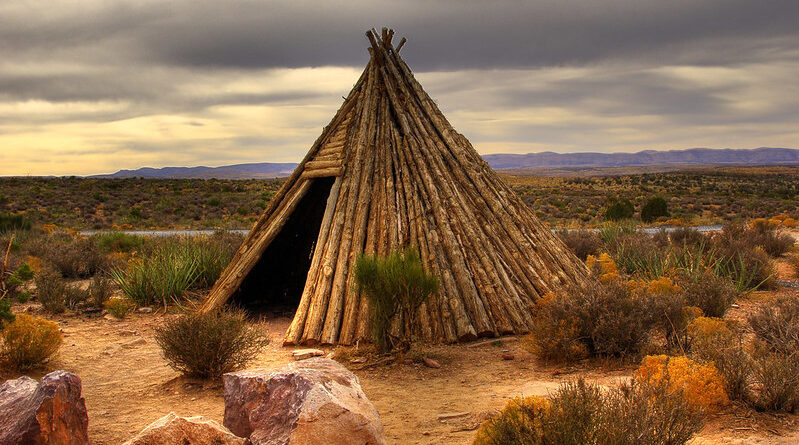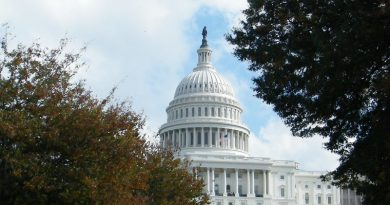Native Americans
Given their near-genocidal treatment at the hands of European colonialism, the current population of Native Americans in the United States remains staggeringly low at over 5 million, just over 1.6% of the country’s population. What few people realise is the sheer breadth of diversity amongst the Native Americans. There are over 500 tribes federally recognised by the United States government, each with their own distinct cultural and historical identities.
1. Tribes
While Native American tribes are often lumped together as a single mass entity, this assessment could not be further from the truth. There are 567 registered Native American tribes in the United States, each with its own unique culture and history.
Apache
One of the most historically significant Native American tribes, the Apache hail from the Southwestern region of the United States, having played a major role in the American-Indian wars of the 19th Century. In modern times, the Apache are based mainly in Arizona and New Mexico, where there are reservations, as well as communities in Oklahoma and Texas. The Apache Indians originally hailed from further North in modern-day Alaska and Canada before migrating southwards and eventually settling around the Rio Grande, although they were a generally nomadic tribe. They were known for their brilliant battle prowess, and the Apache regularly came into conflict with opposing forces, notably the Spaniards and the Americans. The Apache-Mexican Wars was a series of conflicts from the 17th to 20th Centuries, beginning with the Spanish. A series of brutal skirmishes occurred with the Apaches incurring significant losses. Peace was declared towards the end of the 18th Century, but this ended following Mexican independence in 1821. The new government began cutting off resources to the local Apache population, forcing them to resume their hunter-gatherer lifestyle and lead a number of raids. This caused the Mexicans to declare war on the Apache, grossly underestimating their military capabilities. It is difficult to estimate the casualties, but they were vast on both sides. In the aftermath of the Mexican-American War, the US absorbed much of Mexico’s territory and came into conflict with the Apaches in a series of conflicts known as the Apache Wars, spanning from 1849 to 1886. These were brutal and bloody conflicts which eventually saw the Apaches moved to reservations. Currently, the Apache population is estimated at just under 112,000. The tribe is noted for its many folk heroes such as Cochise, a major leader during the Apache Wars and the leader of an uprising against the American government.
Comanche
Based around the Great Plains, the Comanche are currently mainly based in New Mexico, Texas and Oklahoma. The Comanche Nation is based in the city of Lawton, Oklahoma. Since European contact, the population has decreased massively from 45,000 to just over 15,000. The Comanche are historically known as a tribe of fierce warriors who sustained themselves economically through the production and sale of Buffalo products. They were one of the first Indian tribes to master horsemanship following encounters with the Spanish. The Comanche were the major force during the Texas-Indian wars, and proved to be a formidable opponent to the United States army.
Mohawk
One of the most prominent tribes in Eastern North America, the Mohawk People are historically from upstate New York around the Hudson River as well as in parts of Ontario and Quebec in Canada amongst other locations. They were one of the five founding tribes of the Iroquois League, a confederation of tribes and were the first line of defence against European settlers, for which they earned the name the ‘Keepers of the Eastern Door.’
Cherokee
Originating in the American South, the Cherokee Indians hailed from modern-day states such as the Carolinas, Georgia and Tennessee, before migrating elsewhere. The tribe is currently entered mainly in Oklahoma although there are major populations in North Carolina and California as well. With over 300,000 verified tribal members, it is the largest tribe in the United States, with many more claiming Cherokee ancestry. The Cherokee were considered to be one of the most advanced Native American tribes prior to European colonisation, especially well-known for their agricultural capabilities.
Arikara
One of the major Native American tribes centered around North Dakota, the Arikara are closely related to the Pawnee and share a similar language. They have a history of being semi-nomadic and were known for being adept farmers, particularly in the area of horticulture. They were also known for their construction of Earth Lodges, semi-subterranean homes dug from the earth.
Pawnee
A small population of around 3600 remains of the Pawnee people. Based in Oklahoma, the Pawnee hail from the modern-day states of Kansas and Nebraska. Formerly one of the most extensive and powerful Native American tribes, they controlled a vast territorial domain and were often at odds with rival tribes such as the Cheyenne, the Comanche and the Arapho. Similar to the Arikara, they lived in earth lodges and sustained themselves through a variety of different means including agriculture and trade. Despite their high stature, they suffered badly as a result of diseases brought by European settlers, which decimated their population along with famine and conflict. Despite this, their military capabilities were well realised by the US Army, who recruited many of their finest warriors as scouts.
Choctaw
Based in the Southeast of the United States, the Choctaw people are currently spread out across Oklahoma, Mississippi, Louisiana, Texas, Alabama an California. A coalescence of various tribes, the Choctaw were one of the first tribes encountered by Europeans and were labelled as one of the ‘Five Civilised Tribes’ in the 19th Century alongside the Cherokee, the Chickasaw, the Creek and the Seminole. They were also the first tribe victimised by the Indian Removal Act and forced to migrate due to the US attempts to exploit their resources. They were the first Native Americans to serve as code talkers during the First World War. Despite regular collaborations with the US government making the prospect of assimilation close to reality, the Choctaw have managed to maintain and preserve their distinct culture.
Cree
One of the largest Native American tribes, the Cree are mainly based in Canada in modern times although there is a diaspora in some parts of the United States, most notably Montana. Mainly centred in the region of Quebec, the Cree were historically known for their participation in the fur trade as well as their communal, egalitarian lifestyle. Due to their residence in the snowy tundra of Canada, they were known for their use of tools such as snowshoes and toboggans. Hunting remains an important cultural staple of Cree culture and they are well known for their prowess in this field.
Cheyenne
One of the most notable Native American tribes of the Great Plains, the Cheyenne are mainly based in the modern-day states of Montana and Oklahoma, currently comprising a population of nearly 23,000. They are divided into two Nations-the Southern Cheyenne in Oklahoma and the Northern Cheyenne in Montana. They initially came into contact with Europeans in modern-day Minnesota although their exact point origin is unknown. The Cheyenne are well-known for their important role in the Indian Wars, notably victims of the horrific Sand Creek Massacre which saw 600 Cheyenne murdered by the Colorado Militia, led by the famous General Custer. Perhaps more famously was their involvement in the Battle of the Little Bighorn which saw an alliance of Northern Cheyenne, Lakota and Arapho tribes face off against Custer’s forces in modern-day Montana in an overwhelming Native American victory.
Navajo
One of the largest Native American tribes, the Navajo are based in the Southwestern region of the United States with the Navajo Nation having bases across Arizona, New Mexico and Utah. This is the second-largest tribe in the US as well as the largest reservation. Indeed, the Navajo Nation Reservation covers an area of 27,000 square miles, larger than ten of the fifty US states. The population currently numbers over 300,000. The Navajo are noted for their distinct and complex religious practices as well as their decentralised system of government. Much of the population retain a traditional lifestyle.
2. Indian Wars
Rather than referring to a specific conflict, the Indian Wars is a collective term pertaining to a number of inter-related military incursions between various Native American tribes and opposing forces. These conflicts were initially fought with European powers such as the British and Spanish Empires before successor states such as the United States, Canada and Mexico became involved. The period of conflict was intermittent, spanning from the beginning of colonisation in the 16th Century into the early 20th Century.
The Mohawk Trail
A major site in Native American history, the Mohawk Trail is a route in Northwestern Massachusetts which connected tribes from the Atlantic with those from Upstate New York. It was a major trade route between the various tribes, allowing them to exchange various goods such as meat and fur. Tensions broke out between two of the trail’s major tribes-the Mohawks and the Pocumtucks, a conflict exacerbated by Europeans, hoping it would weaken both sides and strengthen their own position. The Mohawks proved victorious, and as a result the trail is named after them. This historic trail was expanded significantly during the Indian Wars, becoming a major gateway between the major American city of Boston and the Eastern Native American towns. Currently, the Mohawk Trail is a major tourism site for the region, with many attracted to the lush scenery, hiking trails and sporting activities.
Andrew Jackson and the Trail of Tears
One of the darkest chapters in American history, the Trail of Tears refers to the policy of forced relocations enacted by the United States government under the directorship of President Andrew Jackson. The major consequence of 1830’s Indian Removal Act, the Native American Tribes of Southeastern United States were unceremoniously ejected from their homelands and forced to migrate to designated areas westwards. The tribes affected belonged to the ‘Five Civilised Tribes-the Cherokee, the Muscogee, the Seminole, the Chickasaw and the Choctaw. For a 20 year period between 1831 and 1850, these tribes were forced into leave their homes and faced considerable hardships in doing so. It is believed that nearly 125,000 individuals were exiled in total. The process was the brainchild of Jackson, a long-time advocate of the policy of Indian Removal. He spent the bulk of his political career pursuing this goal, his prejudiced views forming during his barbaric military campaigns against tribes. Although the law was intended to be implemented peacefully, Jackson and his government utilised violence to force Indian removal. The Choctaw were the first nation to be expelled, completely unprepared for such an arduous feat, many died on the journey as a result. The Seminole were the only tribe to put up a major resistance to the relocation program, with the ensuing conflict proving to be costly on both sides. A handful of Seminole retreated to the Everglades but most of the population was killed in the conflict. The Cherokee were the final of the tribes to be forcibly relocated with nearly half of the population dying during the relocation.
The Comanche-Mexico Wars
A major part of the greater Comanche Wars, the Comanche-Mexico Wars was a recurring series of conflicts lasting nearly 50 years between 1821 and 1850. The Comanche were considered to be amongst the most fierce and formidable warriors of all the Native American tribes, and had previously come into conflict with the Spanish military. Despite this, a period of peace had been declared. Following the Mexican declaration of independence in 1821, hostilities quickly resumed. The conflict was mainly defined by a series of Comanche raids during the 1840’s during which tensions reached their apex. These raids were deadly and grew increasingly bold as the conflict progressed. They were highly organised and saw hundreds of Mexicans killed. Following the Mexican-American Wars, Texas became absorbed by the United States and the raids continued unabated. The Comanche remained a major force to be reckoned with during the 1840’s but their influence waned as the US Army increased their military efforts, decimating the population and reducing their influence significantly.
Battle of the Little Bighorn
Better known as Custer’s Last Stand’, the Battle of the Little Bighorn is one of the most important battles in American history. A face off between a united front of Northern Cheyenne, Lakota and Arapho tribes and the United States Army, it was one of the greatest embarrassments in American military history. A major part of the Great Sioux War of 1876, the battle lasted two days and saw the American forces see an overwhelming defeat. The tribes were lead by iconic figures Crazy Horse and Chief Gall while the American forces were led by the infamous Colonel George Custer. Custer himself was killed along with 267 other American soldiers. Native American deaths, while difficult to quantify, were significantly lower. The battle and Custer’s efforts were initially lionised as an example of American military bravery while the reasons for Native American victory was based solely on their numerical advantage. Recent analyses have portrayed a more unflattering picture of Custer and his many costly errors. He was known to have ignored the warnings of his scouts and carried out poor reconnaissance missions, leaving him grossly unprepared for the incursion.
3. Great Chiefs: Structure of Native American Society
Native American tribal structures differed from one another, but retained certain common aspects. Social stratification in Native American culture was very much as important a concept as it was to European powers, and it remains so in modern times, albeit to a lesser degree. Native American societies were tribal, meaning they were structured like clans. These clans were chiefdoms, in which rulership is held by a singular figure. These figures are elected by their clans, who also hold the right to depose the chiefs or sachems (paramount chiefs) if they so wish. Their powers were fairly limited and few laws of note existed except for ones concerning piety. It was not essential for all Chiefs to be male, with a number of well-known Chiefs being women, most notably Wilma Mankiller.
4. The Buffalo and the Horse
Until European colonisation of the New World, buffalo were a significant animal amongst the Native Americans. They were a major source of meat and were subsequently hunted for thousands of years. There were two major species-the plains bison and the wood bison. Both were hunted for their meat and hides, which were used for clothing. Indeed, their adeptness at hunting soon created a wasteful surplus of meat and buffalo were sometimes hunted fir specific delicacies. The buffalo was an important symbolic animal in a number of Native American religions and there were a number of ceremonial hunts.
Following European colonisation, horses were introduced to the New World by the Spanish and these animals assumed a major role in Native American culture. Many tribes were quick to master the skills of horsemanship and quickly utilised them to help with the hunting of buffalo. Amongst Plains Indians, horses were especially important. In addition to its importance with major tasks such as buffalo hunting, horsemanship became a valuable symbol of social prestige. The Comanche were particularly well-known for their horsemanship abilities, their nomadic, pastoral lifestyle suiting this very effectively.
5. Spiritual Beliefs: Medicine Man, Peace Pipes
Native American spiritual beliefs differ slightly from tribe to tribe but there are a number of connecting aspects between them. Upon the arrival of European colonialsm, observers decreed them to be a non-religious people due to the significant differences to their own practices. This observation was completely untrue and the Native Americans are in fact one of the most spiritually rich and diverse peoples in the world. The religions vary from animistic-based around the belief of objects, animals and places possessing important spiritual essence, monotheistic-based around the worship of a single deity and polytheistic-the worship of multiple deities.
Major recurring practices include the use of sweat lodges. These are small, naturally-built huts in which a purification ceremony takes place. It focuses on prayer and healing and can be dangerous if not done properly. Practitioners are meant to ‘sweat’ out impurities while traditional songs and prayers are recited. Their purposes differ to suit the occasion.
Other practices of note include the Sun Dance, mainly practiced by indigenous peoples from the Plains. The ceremony varies from tribe to tribe but generally revolved around the recitals of songs, dances and prayers paired with physical endurance trials. It is normally a physically exhausting ordeal in which practitioners offer a sacrifice for the benefit of the tribe.
Ceremonial or Peace Pipes are an instrumental item used in a plethora of religious ceremonies. A smoking pipe, they are used for a number of different reasons, including the ratifying of treaties and the offering of prayers. These pipes differ in appearance and name across the different Indigenous tribes. Notable examples include Bluestone, Blue Pipestone and lay.
The majority if not all Indigenous tribes featured Medicine Men or Women as focal spiritual figures These differed in name and function throughout the country, but generally speaking, they served as the leaders of all spiritual and ceremonial matters in the tribe. Knowledge is passed down generation after generation.
Many Native American spiritual beliefs and practices are closely guarded from outsiders due to rampant and disrespectful cultural appropriation. Thus, many of the tribes’ beliefs and systems remain shrouded in a veil of mystery.
6. Home: Teepees, Clothes etc.
Domestic life of Native American tribes obviously varied throughout the country but one particularly iconic symbol is the Tipi, a dwelling unique to the tribes of the Plains. They are known for their distinct cone-shaped appearance, canvas material and smoke flaps. No longer in wide use, they nonetheless retain a ceremonial function. Like many symbols, they have been incorrectly used as a symbol for all Native American tribes, becoming a stereotypical image. Known as much for its practical importance as it is for its ceremonial importance, it suited the nomadic lifestyles of the Plains peoples, due to its easy assembly and durability to suit harsh climates.
Native American clothing is another aspect of Indigenous cultures that have been exploited by cultural appropriation. Many assume that all Native Americans wore the same style of clothes, but this is untrue and varied significantly throughout the country. The majority of tribes sources clothing from materials such as agave and in fewer cases cotton. This was particularly evident in the tribes of the Southwest due to the hot weather. Towards the east, due to the lack of cotton or agave plants, tribes sourced clothing materials from tree bark. In the north, near the Canadian border, animal skins were used extensively due to the harsher cold conditions. Hair styles were a major form of distinction between various tribes.
7. Reservations: Loss of Land
Following the Indian Act, Native American tribes from the Eastern United States were forcibly ejected from their homes and forced to migrate westwards in appalling, inhospitable conditions which caused significant loss of life amongst other severe problems. Reservations were created to house the migrating populations. These are legally designated lands designed to house Native Americans. They are exempt from state law and are alternatively governed by the US Bureau of Indian Affairs. There are currently 326 Indian Reservations in total. The land allotments vary in size-the largest is around the size of West Virginia, although most are nowhere near this size. Overall, Indian Reservations encompass an area of over 56 million acres. Of the total 2.5 million Native Americans living in the United States, only 1 million live in reservations, the others living in major cities such as Los Angeles or Phoenix.





